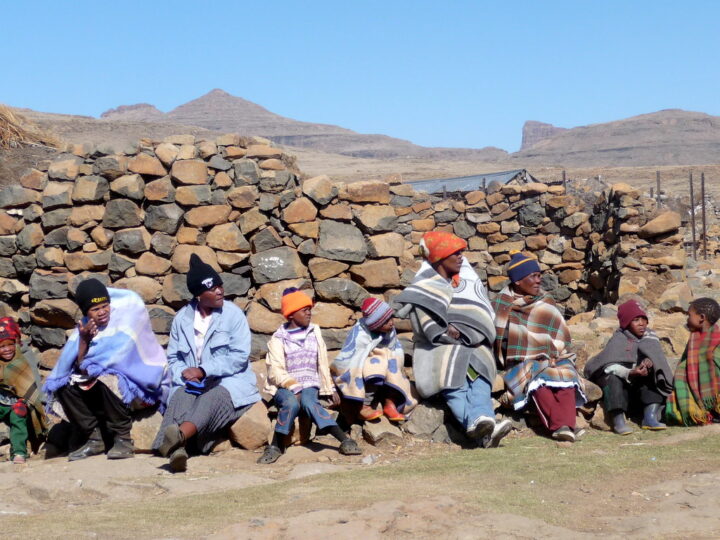Some social media users and climate change sceptics claim that the presence of cold weather, including cold snaps, disproves the idea of global warming.
What is a cold snap?
Cold snaps are short periods of unusually cold weather in a region. They are usually caused by shifts in the jet stream, fast-flowing air currents high above the Earth that move weather systems. When the jet stream dips southward, it pulls cold Arctic air down into places like the U.S. or Europe, leading to a brief cold spell.
Weather Patterns in West Africa
West Africa experiences two main seasons — a rainy season and a dry season — shaped by the movement of winds and moisture across the region. The rainy season, which usually runs from May to October, brings much-needed water for farming but also comes with challenges like flooding and thunderstorms, especially in coastal cities like Lagos, Accra, and Abidjan. In the northern parts, like Niger and northern Nigeria, rains are shorter and less predictable, often followed by long dry spells.
The dry season, from November to March, is marked by the Harmattan, a dusty wind from the Sahara that causes cooler mornings and evenings, dry air, and hazy skies. This is the period when people often feel what might be called a “cold snap,” though it’s more accurately a short-lived cool spell, not true cold.
In recent years, West Africa’s weather has become more unpredictable. Rains may start late or end early, and dry spells can be hotter and longer. Sudden downpours can flood urban areas, while some rural communities face droughts. These changing patterns make it harder for farmers and city dwellers alike to plan ahead.
Understanding these shifts is crucial to adapting and staying safe in a changing climate.
Does global warming cancel out cold weather?
No. Global warming refers to a long-term rise in the Earth’s average temperature. It doesn’t mean every day is warmer everywhere. Seasons still exist, and winter still brings cold temperatures, though on average, winters have been getting milder.
The Intergovernmental Panel on Climate Change (IPCC) notes that since the 1950s, winters across most land areas have become warmer and cold snaps have become less frequent or less intense.
Cold weather vs. climate change: Apples and oranges?
Weather is what we feel day to day, like a cold morning or a heatwave. Climate is the bigger picture: patterns and averages over years and decades. One cold week doesn’t change the long-term warming trend.
Think of it like this: a warm winter jacket doesn’t stop you from feeling cold if there’s a breeze. In the same way, even as the planet warms, local dips in temperature can still happen because of how air and heat move around the planet.
Is the Arctic affecting our winter weather?
This is an area of active research and debate. Some scientists argue that the Arctic is warming faster than other parts of the world. A phenomenon called “Arctic amplification.”
This may be making the jet stream more wavy, leading to more chances for cold air to dip into mid-latitude regions like North America.
Jennifer Francis, a senior scientist at the Woodwell Climate Research Centre and a Ph.D. holder, has published several papers suggesting that a warmer Arctic disrupts the usual patterns in the jet stream, potentially increasing the odds of extreme cold in some areas.
Not all scientists agree on the link between Arctic warming and changes in the jet stream.
Michael Wehner, a Ph.D holder and senior scientist at Lawrence Berkeley National Laboratory, says while the theory is interesting and possibly correct, a clear climate change signal has yet to rise above the noise of natural variability. In his view, attributing increases in extreme cold temperature outbreaks to changes in the polar vortex is premature.
The bigger trend: Winters are getting warmer
Despite occasional cold snaps, long-term data shows that winters are warming globally.
A 2024 study in Science Advances found that extremely cold days in the northern hemisphere have decreased over the past five decades.
Even in places that still experience harsh winters, the coldest days are not as cold as they used to be. The number of extremely cold days has dropped significantly over time.
What experts are saying
There have been theories that link Arctic warming to more mid-latitude cold extremes, but the evidence is not conclusive.
Andreas Schmittner, a professor at Oregon State University, has stated that cold snaps are part of Earth’s natural climate variability and will continue to occur even as the globe is warming. This perspective is supported by discussions in a Science Feedback article, which explores how cold weather events can still happen despite global warming.
Verdict
The claim that the presence of cold weather, including cold snaps, disproves the idea of global warming is false and scientifically inaccurate. Cold snaps can still occur in a warming world due to the way Earth’s weather systems operate.
The presence of cold snaps does not disprove global warming. Short-term weather events like cold spells are influenced by natural atmospheric patterns, such as the jet stream. Long-term records clearly show that the Earth is warming, and winters are becoming milder in most parts of the world. Cold snaps are part of natural variability, not proof that climate change isn’t happening.










